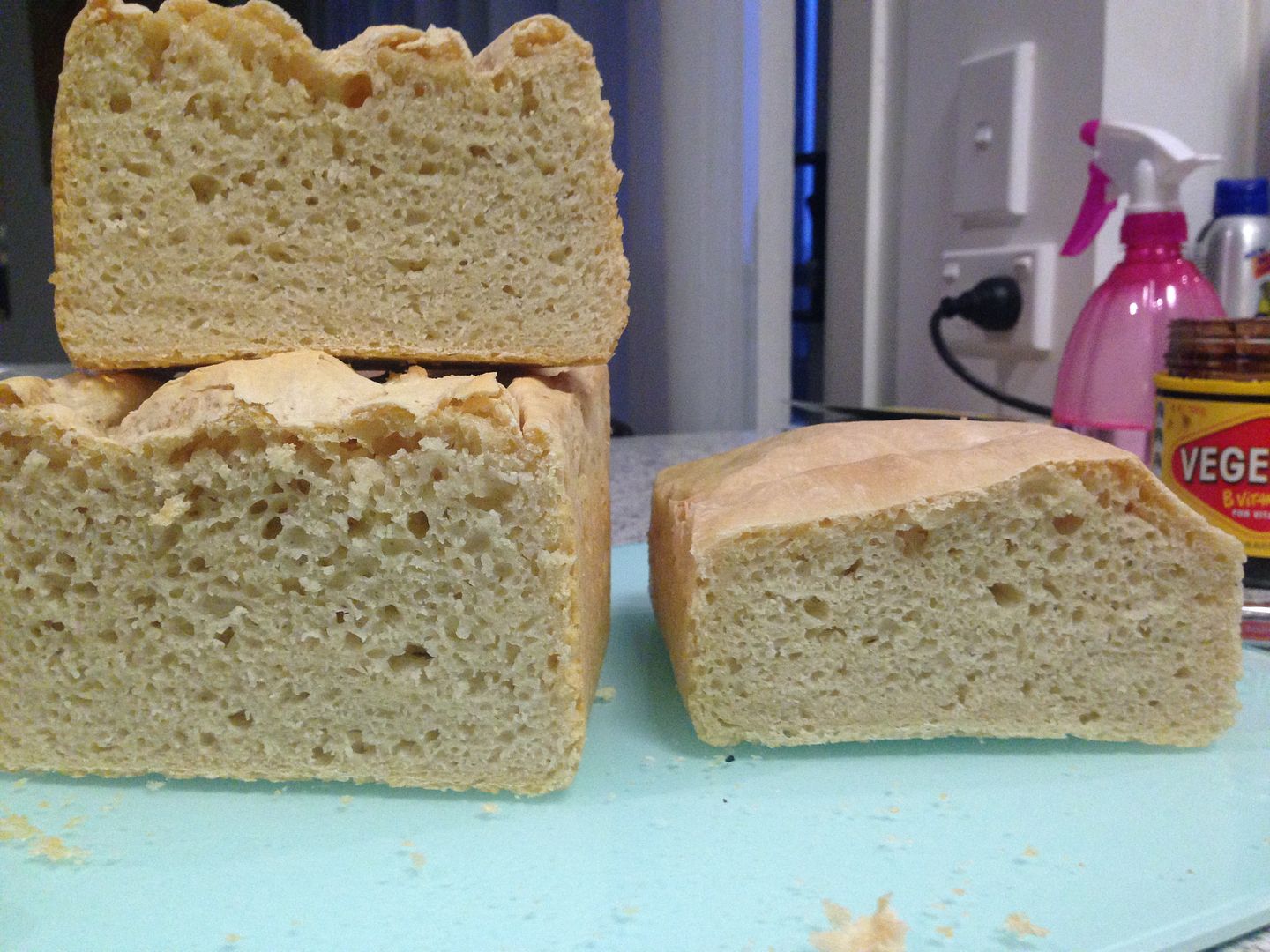G'day, Brett from Brisbane.
I know from being on several other forums (golf and beer making) over the years that reading up first is important, but I really need some help to get going in the right direction.
This is the bread that I'm continually stuck with:

The one on the right is the Rustic receipe in Floydm Blog 'Pain Sur Poolish'. Don't think it is supposed to look like that.....
The one on the left is supposed to be a farmhouse white with 750g flour, 525g water, yeast and salt. I mix in a mixer with dough hook for about 10 minutes, rise, punch, repeat. Bake around 200C.
I reckon I could mix some mortar, bake a few more farmhouse loaves then add an extension onto the house with it, it felt like a brick!
Please give me some links to look at. Receipes seem to be embedded in blogs. I just want to bake a simple loaf of white bread for the family!
Cheers.
Gday and welcome, I'm from Brisbane too.
I'm no expert so won't be much help but what size pan are you using? your loaves seem to be rather wide and low.
Are you just looking for recipe links or instructional too?
Steve.
Here are a few starting questions: 1.) How do you decide when to stop kneading your dough beforeyour bulk rise? 2.) Do you know how to determine whether your gluten formation is complete? 3.) Have you ever learned about a "gluten window" 4.) How do you decide when your loaves are ready for baking? 5.) How did you decide on 200C? 6.) Can your oven get to a higher temperature, possibly as high as 260C? 7.) Have you ever studied how to produce different thicknesses of crusts? 8.) Do you have a Dutch oven and have you read about how to use one in baking breads? 9.) Do you weigh your ingredients before adding them when making your dough?
Finally, have you learned how to make both low and high hydration breads?
This may seem like a lot, but these are all issues that, once clearly in your head, will help you decide what happened that resulted in those loaves looking the way they do.
At least the one on the left, so the dough would have been too soft by the time it went in the oven to support the bubbles. Think what happens when you "knock back"/"punch down" the dough after the first ferment - you don't want that a 2nd time. Google/search for the "finger poke" test and use that for the next ones.
Baking hotter will make a darker crust too. Try 210C for half an hour as a starting point and work from there. You can always take it out the tin, check the bottom for a hollow sound (not always the best test, but it's a good start) and put it back in without the tin if it needs a bit more.
If you want the basics of basic white bread recipe, then here it is:
750g strong white flour (make sure it's marked strong or bread flour)
480g water
9g salt
9g dried yeast.
Mix the dry stuff, then add the water and mix well. Leave covered for half an hour, then give it a quick knead. Leave covered for an hour or until doubled in size.
Tip out of the bowl and pat it into a rough rectangle slightly narrower than the width of your tin - might need a light dusting of flour to stop it sticking to the bench here. Roll it towards you like a swiss roll and put in the tin with the seam at the bottom. Cover and leave to rise. Probably no more than an hour, but check after the first 30 minutes (and every 10 minutes after that) - poke a floured finger into it and when it only just starts to spring back (watch finger poke videos) put it into the oven at 210C (which you've pre-heated) check after half an hour.
That's the simplest of the simple white breads - should make a good loaf. It's nothing too special, just a generic good loaf. Flour to bread in about 3 hours.
However, I'm sure the breads you made taste OK though, and will make good toast!
-Gordon
How ya been going, any luck improving on your loaves?